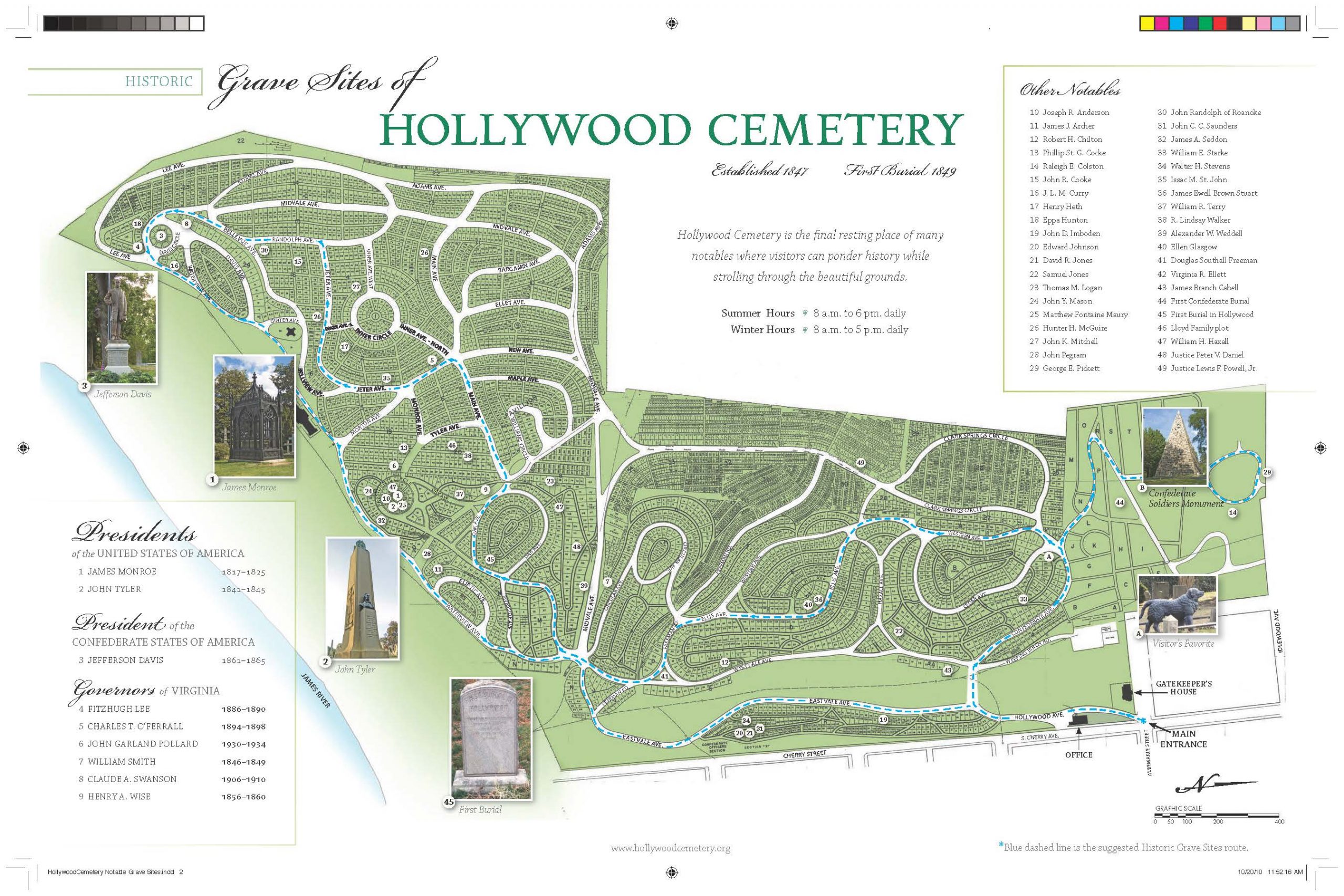Ellen Glasgow
Birth Name:
Ellen Anderson Gholson Glasgow
Birth Date:
April 22, 1873
Birth Place:
Richmond, Virginia
Death Date:
November 21, 1945
Place of Death:
1 West Main Street, Richmond, Virginia
Age:
72
Cause of Death:
Coronary thrombosis
Cemetery Name:
Hollywood Cemetery
Claim to Fame:
Writers and Poets
Ellen Glasgow was an American novelist whose realistic depictions of life in her native Virginia helped direct Southern literature away from sentimentality and nostalgia. A lifelong Virginian who published 20 books including 7 novels which sold well (five reaching best-seller lists) as well as gained critical acclaim earning a Pulitzer Prize in 1942.
Cemetery Information:
Final Resting Place:
Hollywood Cemetery
412 South Cherry Street
Richmond, Virginia, 23220
United States
North America
Map:

Map of Hollywood Cemetery in Richmond, Virginia
Grave Location:
Section DE, Plot 15Grave Location Description
As you enter the cemetery, follow the blue line on the road to the right and it will wind up and around to Section DE overlooking the river on Ellis Avenue. The blue line will also take you to Jefferson Davis and Presidents James Monroe and John Tyler.
Grave Location GPS
37.53751131, -77.4547539Visiting The Grave:
Photos:
[+]
[+]
[+]
[+]
[+]
[+]
[+]
[+]
[+]
[+]
[+]
[+]
[+]
FAQ's
Ellen Glasgow was born on April 22, 1873.
Ellen Glasgow was born in Richmond, Virginia .
Ellen Glasgow died on November 21, 1945.
Ellen Glasgow died in 1 West Main Street, Richmond, Virginia.
Ellen Glasgow was 72.
The cause of death was Coronary thrombosis.
Ellen Glasgow's grave is in Hollywood Cemetery
Read More About Ellen Glasgow:
Videos Featuring Ellen Glasgow:
See More:
Back to Top


